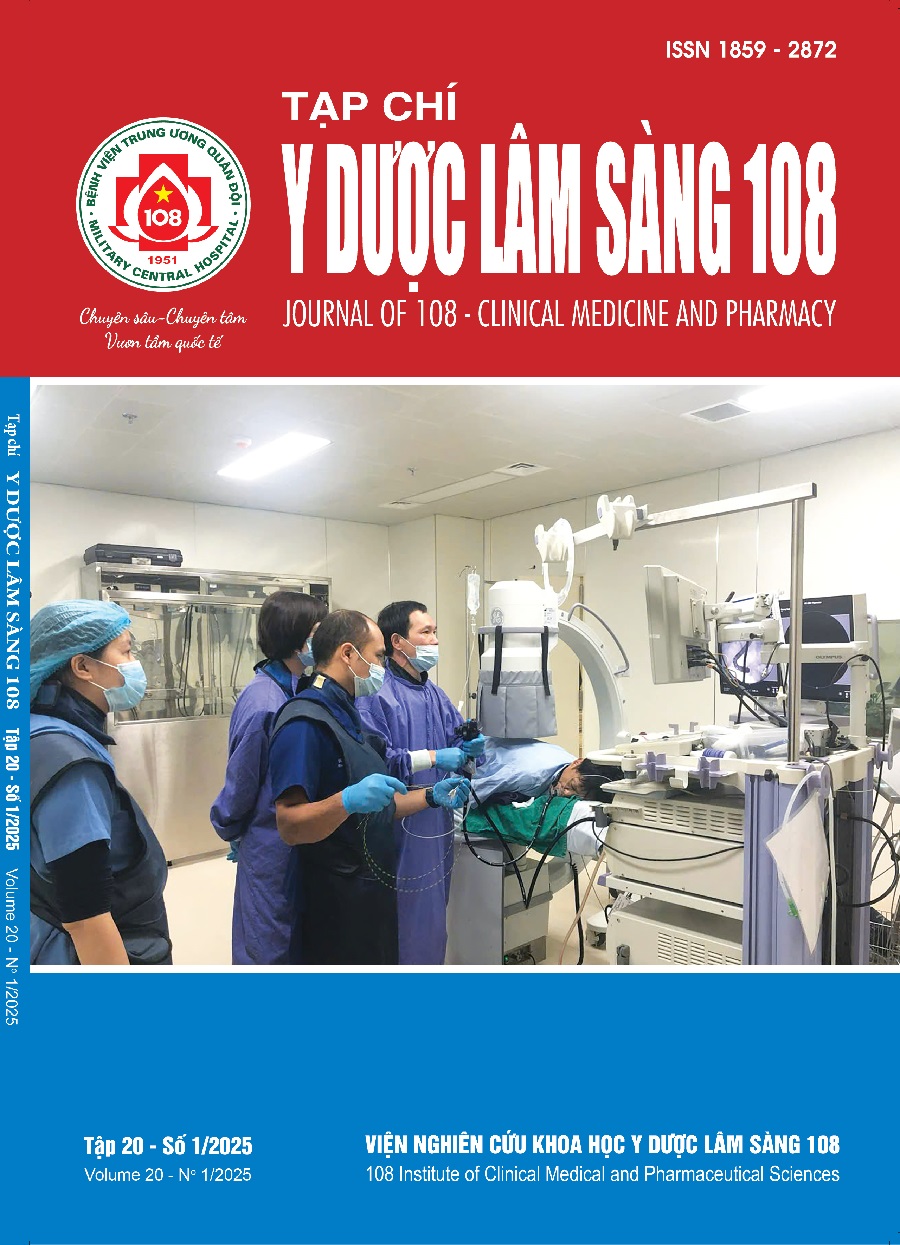Evaluation of the association between some clinical characteristics and dual antiplatelet use over 12 months after percutaneous coronary inter-vention in patients with type 2 diabetes
Main Article Content
Keywords
Abstract
Objective: To evaluate the rate of extended dual antiplatelet therapy (DAPT) beyond 12 months and to identify clinical factors associated with prolonged use in high-risk diabetic patients following percutaneous coronary intervention (PCI). Subject and method: This prospective descriptive study involved 329 high-risk diabetic patients post-PCI at the University Medical Center, Ho Chi Minh City. Clinical factors and outcomes were recorded and analyzed. Result: Of the 329 patients, 197 (60%) continued DAPT beyond 12 months. The recurrence rate of cardiovascular events was 20% in the group that discontinued DAPT after 12 months, compared to 8% in the group that maintained DAPT. The extended DAPT group experienced had a 12% bleeding rate, mainly gastrointestinal bleeding (8%) and epistaxis (4%). Conclusion: Prolonged DAPT use beyond 12 months in high-risk diabetic patients effectively prevents cardiovascular events but also increases the risk of bleeding. Careful consideration of risk factors and benefits is essential when deciding on extended DAPT duration.
Article Details
References
2.Huang M, Li D, Wang D et al (2022) Factors predicting the occurrence of net adverse clinical and cerebral events in patients with acute coronary syndrome treated with clopidogrel or ticagrelor in combination with aspirin: a real world study. Annals Of Translational Medicine 10(2): 98.
3.Elmariah S, Mauri L, Galper BZ et al (2014) Extended duration dual antiplatelet therapy and mortality. Lancet 385(9970): 792-798.
4.Valgimigli M, Bueno H, Byrne RA, Collet JP, Costa F, Jeppsson A, Jüni P, Kastrati A, Kolh P, Mauri L, Montalescot G, Neumann FJ, Petricevic M, Roffi M, Steg PG, Windecker S, Zamorano JL, Levine GN; ESC Scientific Document Group; ESC Committee for Practice Guidelines (CPG); ESC National Cardiac Societies (2017) ESC focused update on dual antiplatelet therapy in coronary artery disease developed in collaboration with EACTS. European Journal of Cardio-Thoracic Surgery 53: 34-78.
5.Valgimigli M, Frigoli E, Heg D, Tijssen J, Jüni P, Vranckx P, Ozaki Y, Morice MC, Chevalier B, Onuma Y, Windecker S, Tonino PAL, Roffi M, Lesiak M, Mahfoud F, Bartunek J, Hildick-Smith D, Colombo A, Stanković G, Iñiguez A, Schultz C, Kornowski R, Ong PJL, Alasnag M, Rodriguez AE, Moschovitis A, Laanmets P, Donahue M, Leonardi S, Smits PC; MASTER DAPT Investigators (2021) Dual antiplatelet therapy after PCI in patients at high bleeding risk. N Engl J Med 385(18): 1643-1655.
6.Capodanno D, Morice MC, Mehran R et al (2020) Trial design principles for patients at high bleeding risk undergoing PCI. JACC 76(12): 1468-1483.
 ISSN: 1859 - 2872
ISSN: 1859 - 2872
